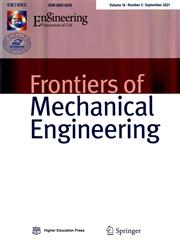Numerical and experimental investigation of gas flow field variations in three-dimensional printed gas-dynamic virtual nozzles
IF 4
2区 工程技术
Q1 ENGINEERING, MECHANICAL
引用次数: 1
Abstract
Gas-dynamic virtual nozzles (GDVNs) play a vital role in delivering biomolecular samples during diffraction measurements at X-ray free-electron laser facilities. Recently, submicrometer resolution capabilities of two-photon polymerization 3D printing techniques opened the possibility to quickly fabricate gas-dynamic virtual nozzles with practically any geometry. In our previous work, we exploited this capability to print asymmetric gas-dynamic virtual nozzles that outperformed conventional symmetric designs, which naturally leads to the question of how to identify the optimal gas-dynamic virtual nozzle geometry. In this work, we develop a 3D computational fluid dynamics pipeline to investigate how the characteristics of microjets are affected by gas-dynamic virtual nozzle geometry, which will allow for further geometry optimizations and explorations. We used open-source software (OpenFOAM) and an efficient geometric volume-of-fluid method (isoAdvector) to affordably and accurately predict jet properties for different nozzle geometries. Computational resources were minimized by utilizing adaptive mesh refinement. The numerical simulation results showed acceptable agreement with the experimental data, with a relative error of about 10% for our test cases that compared bell- and cone-shaped sheath-gas cavities. In these test cases, we used a relatively low sheath gas flow rate (6 mg/min), but future work including the implementation of compressible flows will enable the investigation of higher flow rates and the study of asymmetric drip-to-jet transitions.三维打印气动虚拟喷嘴内气体流场变化的数值与实验研究
在x射线自由电子激光设备的衍射测量中,气体动力学虚拟喷嘴(GDVNs)在传递生物分子样品中起着至关重要的作用。最近,双光子聚合3D打印技术的亚微米分辨率使快速制造几乎任何几何形状的气体动态虚拟喷嘴成为可能。在我们之前的工作中,我们利用这种能力打印出了优于传统对称设计的非对称气体动力虚拟喷嘴,这自然导致了如何确定最佳气体动力虚拟喷嘴几何形状的问题。在这项工作中,我们开发了一个3D计算流体动力学管道来研究气体动力学虚拟喷嘴几何形状对微射流特性的影响,这将允许进一步的几何形状优化和探索。我们使用开源软件(OpenFOAM)和高效的几何流体体积方法(isoAdvector)来经济而准确地预测不同喷嘴几何形状的射流特性。利用自适应网格细化,使计算资源最小化。数值模拟结果与实验数据吻合较好,钟形和锥形护套气腔的相对误差约为10%。在这些测试案例中,我们使用了相对较低的护套气体流速(6 mg/min),但未来的工作,包括可压缩流动的实施,将使研究更高的流速和不对称滴喷转换成为可能。
本文章由计算机程序翻译,如有差异,请以英文原文为准。
求助全文
约1分钟内获得全文
求助全文
来源期刊

Frontiers of Mechanical Engineering
Engineering-Mechanical Engineering
CiteScore
7.20
自引率
6.70%
发文量
731
期刊介绍:
Frontiers of Mechanical Engineering is an international peer-reviewed academic journal sponsored by the Ministry of Education of China. The journal seeks to provide a forum for a broad blend of high-quality academic papers in order to promote rapid communication and exchange between researchers, scientists, and engineers in the field of mechanical engineering. The journal publishes original research articles, review articles and feature articles.
 求助内容:
求助内容: 应助结果提醒方式:
应助结果提醒方式:


